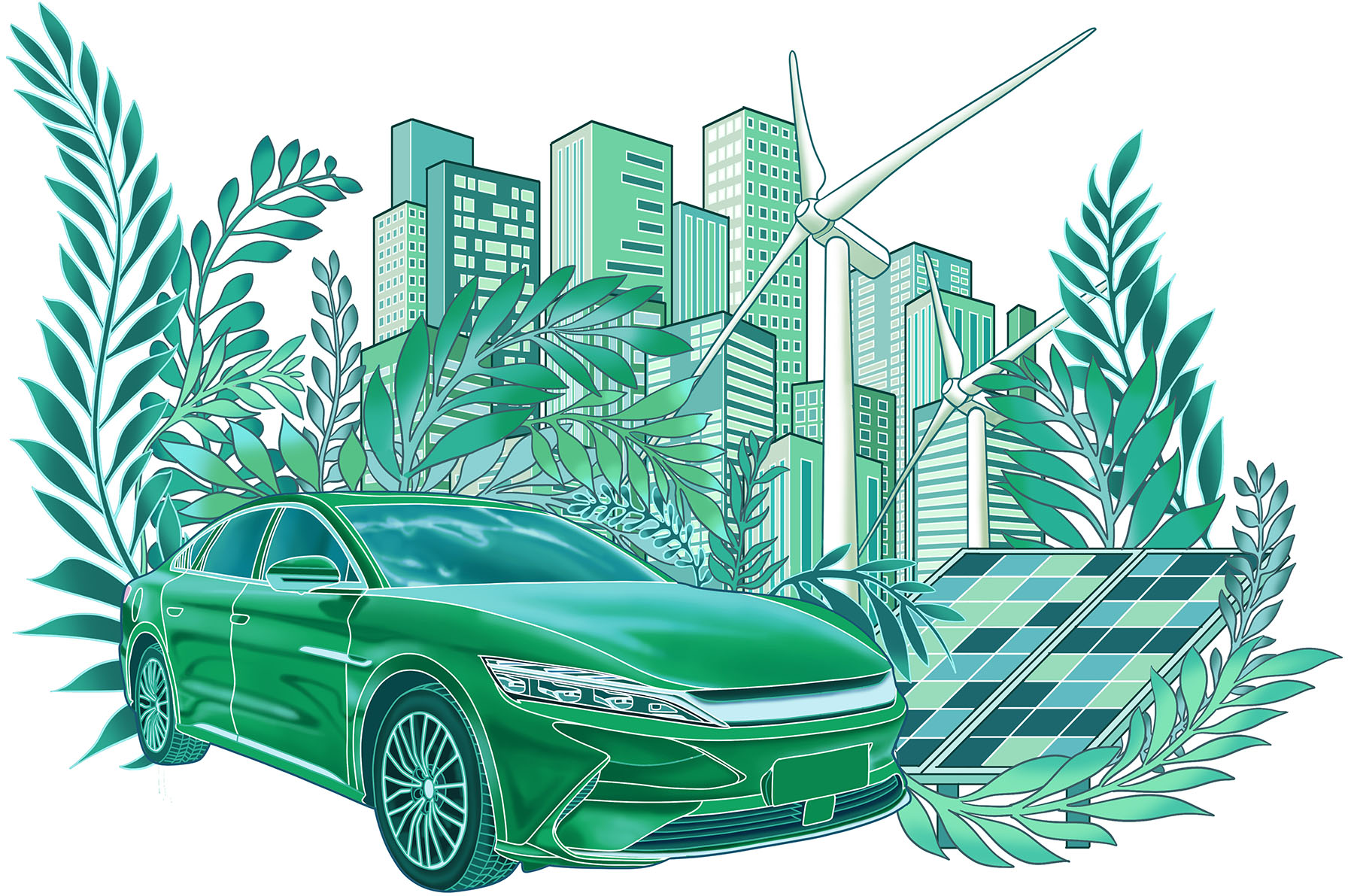
With the return of climate skeptic Donald Trump to the White House — especially his threat to withdraw the United States from all climate treaties including the Paris Agreement, which is central to the battle against climate change and keeping global temperature rise below 1.5 degrees Celsius — the heavy lifting on the climate front may be left to China. What is and will happen in China represent the only hope for the world to not reach the disastrous projections on climate and the Earth's future.
Fortunately, China is leading the green energy drive globally — it has by far the highest installed capacity for solar and wind power generation, and is a global leader in electric vehicles and reforestation.
China, along with the US, made possible the 2015 Paris Agreement to cap global temperature rise at 1.5 C. It has also vowed to peak its carbon emissions before 2030 and achieve carbon neutrality before 2060. In fact, so rapid has been China's use of clean energy technologies that its carbon emissions could peak before the targeted year.
READ MORE: High-tech sectors to attract more FDI
Surprisingly, China has made the achievements while realizing healthy economic growth. It is not only the largest economy in terms of purchasing power parity but also leads the world in the production of goods normally associated with high carbon emissions. China's total electricity generation is twice that of the US, steel and cement production 10 and 20 times that of the US, respectively.
China's high-speed growth and industrialization since the launch of reform and opening-up in the late 1970s has contributed much to global emissions, but the Chinese government, realizing the dangers of climate change, has changed its development policy in the past decade.
China's renewable energy boom has already exceeded its 2030 growth targets for wind and solar energy. In 2023 and 2024, China installed the highest solar photovoltaic capacity in the world — 260 of the global 459 gigawatts in 2023, and 334 of 593 gigawatts in 2024.
Chinese factories produced 80 percent of the world's solar panels in 2024, which caused prices to dip and thus encouraged other countries to purchase solar panels from China. As a matter of fact, China's renewable capacity is growing faster than the overall demand for electricity, meaning fossil fuel use is declining.
Thanks to its solar and wind power generation, the Global Energy Monitor has highlighted that China's contribution to reducing emissions is twice that of the rest of the world, with 180 GW of solar and 159 GW of wind energy projects under construction.
"Wind and solar now account for 37 percent of the total power capacity in the country, an 8 percent increase from 2022, and widely expected to surpass coal capacity, which is 39 percent of the total right now, in 2024," the Global Energy Monitor said.
By continuing its solar and wind electricity growth, China will generate 3,500 GW of renewable energy by 2030. By 2035 that figure could increase to 5,000 GW, and 65 percent of the total energy mix. These advances will see China reduce its carbon emissions by 30 percent by 2030 from the 2023 level.
To reach these goals, China needs to ensure 60 percent of its auto sales comprise EVs and plug-in hybrids, which it can easily realize because the current figure is 50 percent.
In EV production and sales China has topped the world for the past eight years — EVs are estimated to have reduced 50 million tons of carbon emissions in 2023.
Furthermore, China has to raise the share of railway freight to 25 percent, which is quite possible given the country's fast-growing rail network, currently at 162,000 kilometers, and reduce its industrial emissions by 25 percent by 2035 from the 2023 levels — including 45 percent in steel. China's nationwide emissions trading system, which includes steel, aluminum and cement, will make that possible.
ALSO READ: As US risks rise, China shines like a beacon
The drawdown in CO2 is also being helped by China's massive reforestation program. According to the UN Food and Agriculture Organization, China leads the rest of the world in reforestation, adding 1,937,000 hectares every year to the country's green cover (2010-20), with Australia being a distant second one.
One can easily see the extensive tree cover even in Chinese cities. This has not only reduced emissions but also cooled down the temperature. Adding 10 percent more green cover to cities and towns could potentially reduce the surface temperature of the area by 2.2 C.
China has worn much opprobrium for CO2 increase during its rapid industrialization. Changed policies, however, are showing that continued industrialization does not have to be at the expense of the natural environment. As President Xi Jinping recently said, "Protect the ecological environment, and it will reward you."
The author is a Newcastle-based Australian social commentator and historian.
The views don’t necessarily reflect those of China Daily.


